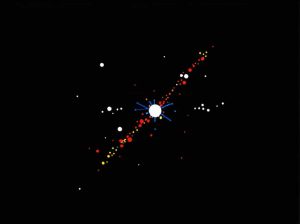The 2024 total solar eclipse is one of the most anticipated astronomical events of the decade. On April 8, 2024, the Moon will completely cover the Sun, creating a breathtaking display of darkness in the middle of the day. The path of totality for this eclipse will be different from previous events, offering millions of people a chance to witness the phenomenon firsthand.
In this topic, we will explore the new path of totality for 2024, which cities will experience the best viewing conditions, and tips on how to safely observe the eclipse.
What Is the Path of Totality?
The path of totality is the narrow strip of land where the Moon completely blocks the Sun. Only observers within this path will experience total darkness for a few minutes. Those outside the path will only see a partial eclipse, where part of the Sun remains visible.
The width of the path for the 2024 eclipse will be around 115 miles (185 km), giving many regions across North America the opportunity to see this rare event.
New Path of Totality for the 2024 Eclipse
Where Will the Eclipse Begin?
The eclipse will start over the Pacific Ocean and first make landfall in Mexico. It will then move across the United States and Canada before ending over the Atlantic Ocean.
Major Cities in the Path of Totality
If you want to see the eclipse in its full glory, you need to be within the totality zone. The following cities will experience total darkness for several minutes:
- Mexico: Mazatlán, Durango, Torreón
- United States: Austin (TX), Dallas (TX), Little Rock (AR), Indianapolis (IN), Cleveland (OH), Buffalo (NY)
- Canada: Montreal, Quebec City
How Long Will Totality Last?
The duration of totality varies depending on your location. Some of the longest viewing times include:
- Mazatlán, Mexico: 4 minutes 26 seconds
- Dallas, Texas: 3 minutes 49 seconds
- Indianapolis, Indiana: 3 minutes 47 seconds
- Montreal, Canada: 1 minute 43 seconds
Best Places to Watch the 2024 Eclipse
1. Mexico: The First Landfall
Mexico will be the first country to experience the total eclipse, and cities like Mazatlán will offer some of the longest viewing times. The weather in this region is typically clear, making it an ideal spot for eclipse watchers.
2. United States: A Prime Viewing Zone
The eclipse will pass through Texas, Oklahoma, Arkansas, Missouri, Illinois, Indiana, Ohio, Pennsylvania, New York, Vermont, and Maine. Texas is expected to have the best weather conditions, while states farther north may face cloudy skies.
3. Canada: The Final Viewing Opportunity
After crossing the U.S., the eclipse will enter Canada through Ontario, Quebec, New Brunswick, Prince Edward Island, and Newfoundland. Montreal and Quebec City are among the largest Canadian cities within the path of totality.
How to Safely Watch the Eclipse
1. Use Solar Viewing Glasses
Never look directly at the Sun without proper eye protection. Regular sunglasses are not safe. Use solar eclipse glasses that meet international safety standards.
2. Use Pinhole Projectors
A pinhole projector allows you to watch the eclipse indirectly by projecting an image of the Sun onto a surface. This is a safe and easy way to observe the eclipse without special equipment.
3. Telescopes and Binoculars with Solar Filters
If you plan to use a telescope or binoculars, attach a certified solar filter to avoid permanent eye damage.
Weather Considerations for the Eclipse
Cloudy weather can ruin the experience of an eclipse. The best locations for clear skies in April 2024 are in Mexico and Texas, while regions in the Midwest and Northeast U.S. may have a higher chance of cloud cover.
The 2024 total solar eclipse will be a spectacular event, with a new path of totality passing through Mexico, the United States, and Canada. Choosing the right location with clear skies will be essential for getting the best view. If you plan ahead and use proper eye protection, you will have an unforgettable experience watching this rare celestial event.



